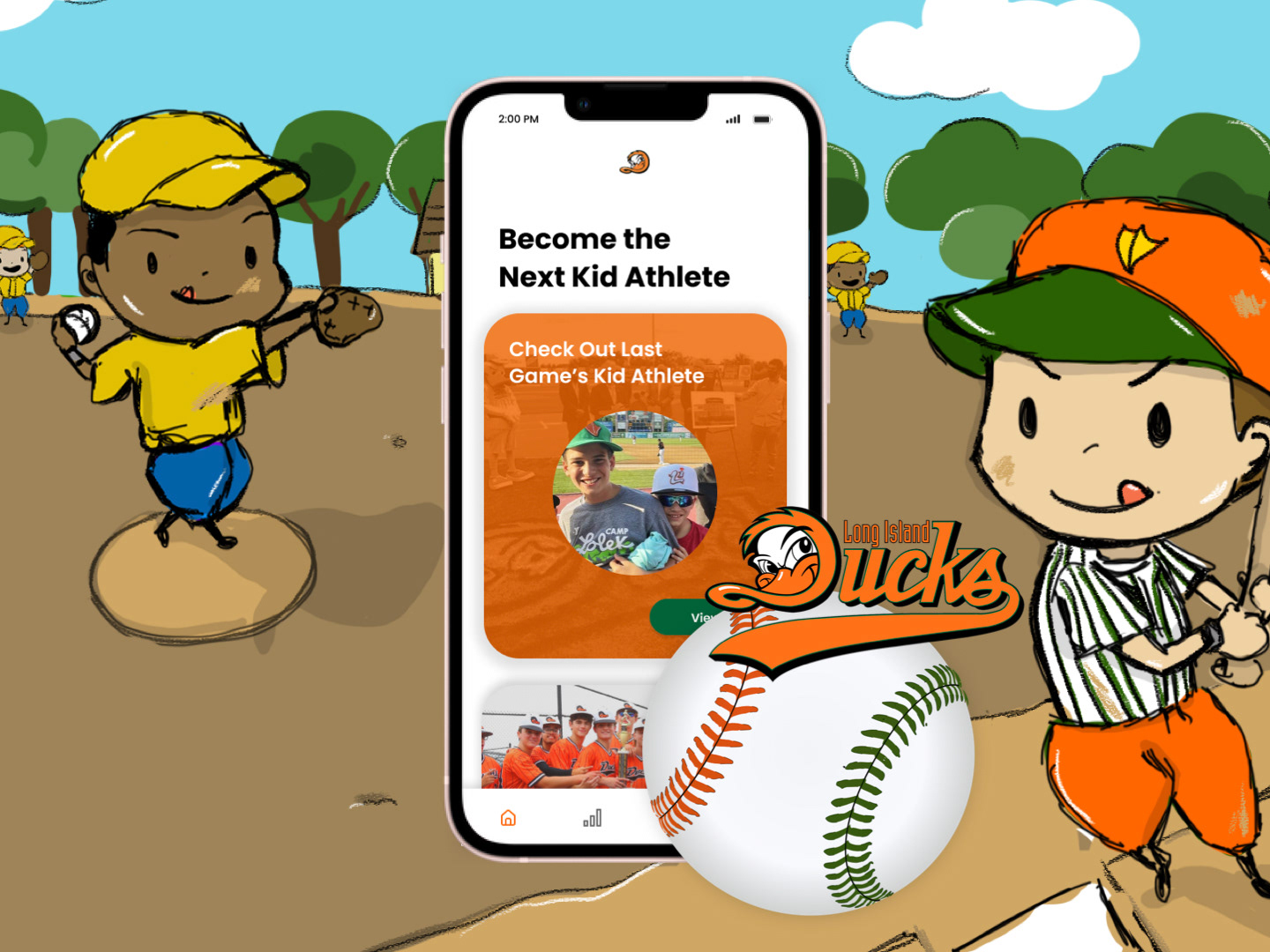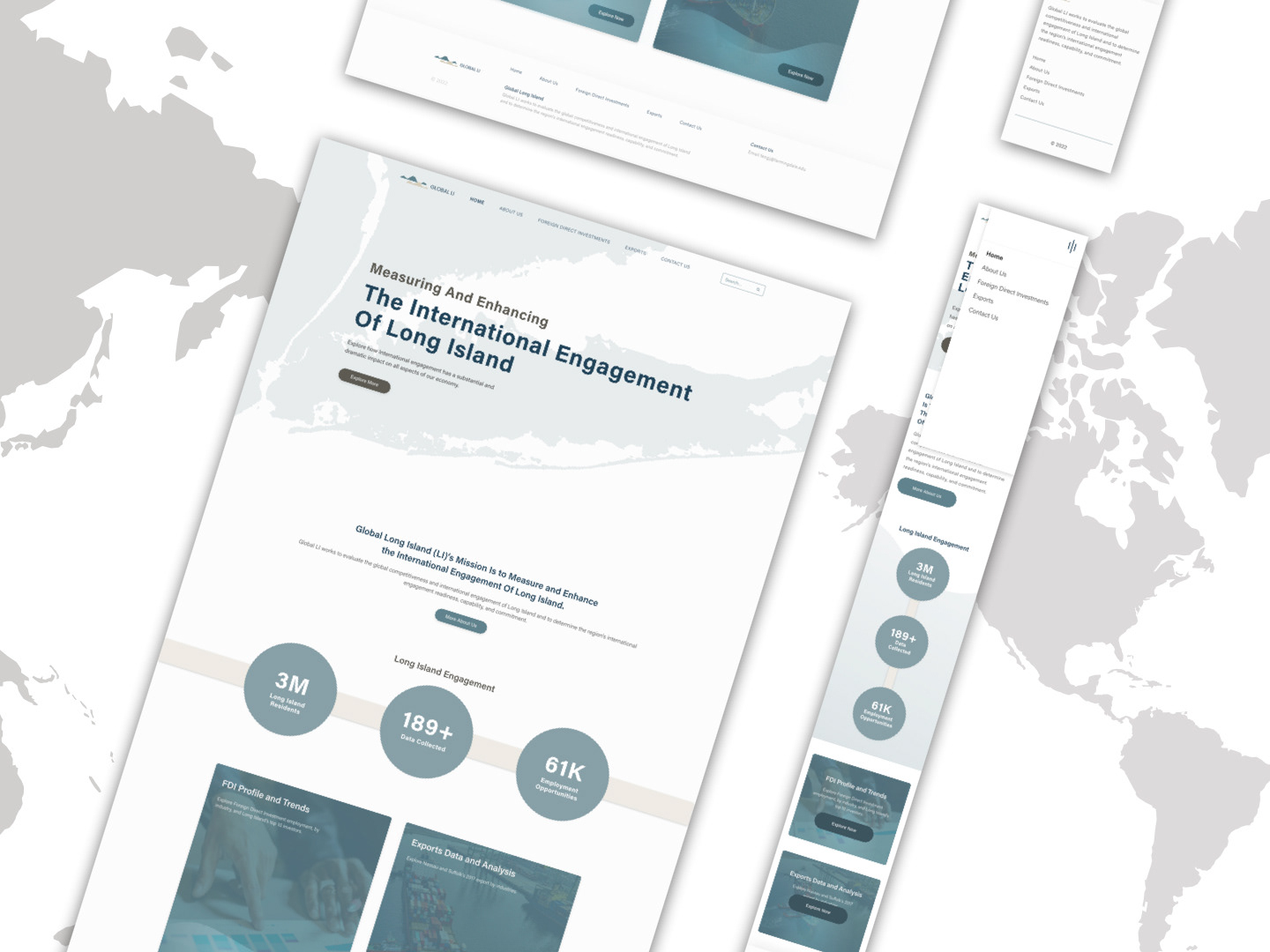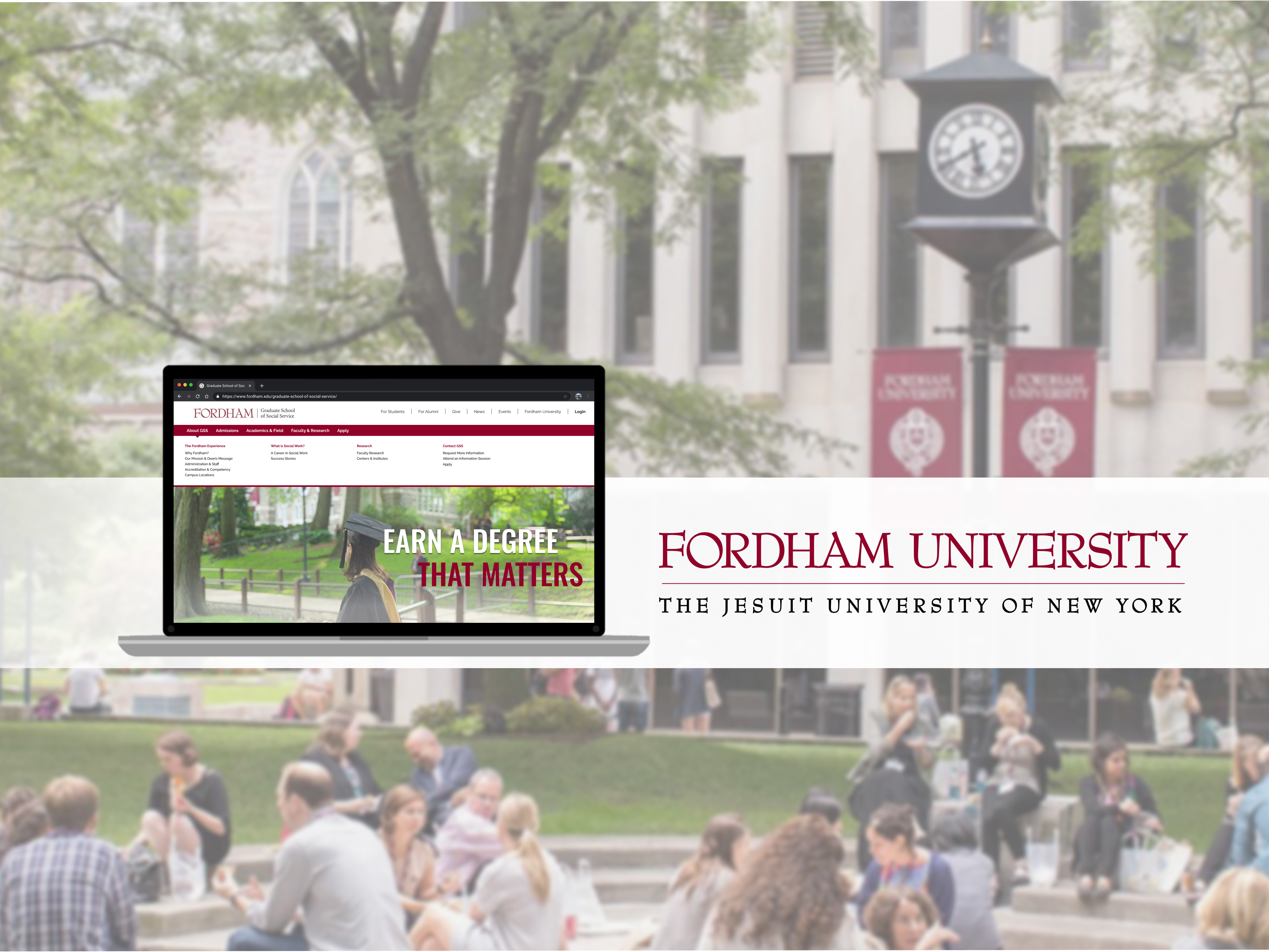Client
IXD Senior Thesis
IXD Senior Thesis
Product
Let's Eat
Let's Eat
Role
Interaction Design Student
Interaction Design Student
Time
September 2022 - May 2023
September 2022 - May 2023
My Story
"Nei sik jor fahn meih a?" 👨👩👧👦🍚🥢
Growing up, in NYC's Chinatown, my mother owned and operated a jewelry store located on Bowery Street, requiring her to work seven days a week. I eagerly anticipated Chinese New Year, a day where my family and relatives gathered at a restaurant in Chinatown to partake in New Year's Eve Dinner. My aunt would always greet me with the Cantonese phrase, "Nei sik jor fahn meih a? Sik fan la!" (Have you eaten yet? Let's eat!). We would gather around a circular table and dine as lively conversations filled the air, with everyone delighting in the festive atmosphere and joining in the New Year celebration alongside other families in the restaurant.
Problem
Over the years, NYC's Chinatown has encountered numerous challenges 😢
After the COVID-19 outbreak, the pandemic significantly affected Chinatown's tourists, visitors, locals and restaurant owners. Other challenges include the prevalence of tourist traps, the lack of authentic food experiences, and distrust of the Asian community. Witnessing this situation occur in my childhood home was devastating, and I felt a strong urge to contribute to the community by dedicating my senior thesis to the revitalization of Chinatown
Solution and Significant Outcomes
Showcasing commonalities amongst diverse cultures 😄
Let's Eat, a connected mobile round table display that brings visitors to NYC's Chinatown restaurant community by providing authentic culinary experiences that showcase commonalities amongst diverse cultures unlike Yelp, Google Maps, and TripAdvisor.
The Let's Eat app employs data tracking and AI technology to personalize users' preferences. For example, if a user enjoys American BBQ, the app can introduce them to Chinese restaurants offering Chinese BBQ, for culinary exploration. In Chinese culture, communal dining has been a longstanding tradition. The concept of round tables, shared dishes, and bowls symbolize unity. Let's Eat embodies this cultural principle, aiming to unite tourists, visitors, locals, and businesses through shared cultural experiences and culinary preferences.
Significant outcomes include:
•Gathered insights from over 1,662 survey respondents.
•Exhibited in Farmingdale State College's 2023 Senior Design Expo.
•Won first place in a business pitch competition.
•Presented at multiple research conferences.
•Exhibited in Farmingdale State College's 2023 Senior Design Expo.
•Won first place in a business pitch competition.
•Presented at multiple research conferences.
Tools: Figma, Adobe Photoshop, Illustrator, and InDesign
Design Process
9 month process divided into a 5 course meal 🥡
Project Scope and Key Objectives
Revive the life of Chinatown through tourists and the community
•Conceptualize, research, and develop a commercially viable project addressing Chinatown's problems.
•Produce high-quality design materials to attract tourists, locals, and business owners.
•Raise awareness of challenges within the Asian and Chinatown community in Farmingdale.
•Produce high-quality design materials to attract tourists, locals, and business owners.
•Raise awareness of challenges within the Asian and Chinatown community in Farmingdale.
Research- Surveys
40.9% of locals believe that Chinatown is dying 😟
Based on the data gathered, it was found that the majority of participants among locals, visitors, and tourists were between the ages of 18-35. According to the first survey targeting Chinatown locals, 40.9% believe that Chinatown is dying. Locals tend to shop and eat in Chinatown, and 62.2% of them are interested in Chinese culture’s food. 54.2% of respondents felt like they are part of the community, while 64.3% of them desired to be more involved. Moreover, 71% of locals showed support for local businesses. In the second survey conducted among people who attended Asian-themed events, the top three reasons for attendance were food, family and friends, and fun activities. 84.7% went with friends or family while 16.3% attended alone. The top two aspects that attendees enjoyed were the activities provided and the food served. Additionally, 72.9% of the respondents learned more about the culture, 68.7% felt more involved with the community, and 77.3% would attend again.
Research- Interviews
1,662 responses from locals and attendees of Asian-themed events
In total, there were eleven semi-structured interviews ranging from tourists, visitors, locals, and restaurant owners, two online close-ended questionnaires which received 1,662 responses from locals and attendees of Asian-themed events, and six live observations, including the Queens Night Market, True World Food Expo, Japan Fes, American Museum of Natural History, Mee- Sum Cafe, Bayard and Pell Street, and several other bakeries and restaurants in Chinatown.
Interview Quotes
"Chinatown is losing its popularity"
Tourists and visitors expressed a strong desire for an authentic culinary experience in Chinatown, but is effected by time constraints. Locals also stated that Chinatown's popularity has decreased due to recent gentrification, causing sadness among residents as many have a strong attachment to their beloved community. Additionally, restaurant owners are struggling with rising rent prices after the impact of the pandemic.
Research - Observations
Group travel is a popular choice amongst tourists
During observations, it was noted that group travel is popular among tourists. Sharing food is common, as tourists prefer sampling various dishes at once and often photograph their meals to document and share experiences. Despite long wait times and crowds, tourists are willing to queue for local cuisine. Surprisingly, tourists would socialize with other tourists about each other’s dishes and share recommended eating spots.
Research - Analysis
Dining, exploring with family and friends, and enjoyable activities are travelers' favorites 🍽️
Based on the research conducted, it was discovered that eating food, traveling with family and friends, and engaging in activities are the primary factors that resonate with travelers. By providing these opportunities, tourists are more likely to immerse themselves in the local culture, feel connected to the community, and return for more experiences. Some common activities of tourists include sampling a variety of dishes, taking pictures of their food, and sharing their experiences.
User Archetypes
你好 Ni Hao, Esther, Vivian, Jessica, and Donald! 👋
Let’s Eat caters to three user groups: tourists and visitors, locals, and restaurant owners. Four personas were identified through extensive research, including two tourists (Esther and Jessica), one local (Vivian), and one business owner (Donald Moy). These personas were created based on real people who were interviewed during the research process.
User Archetypes - Esther
Meet Esther, our avid traveler and main persona
Learn more about her behaviors, persona, empathy map, and journey map.
User Archetypes - Vivian, Jessica, and Donald
Learn about the other personas

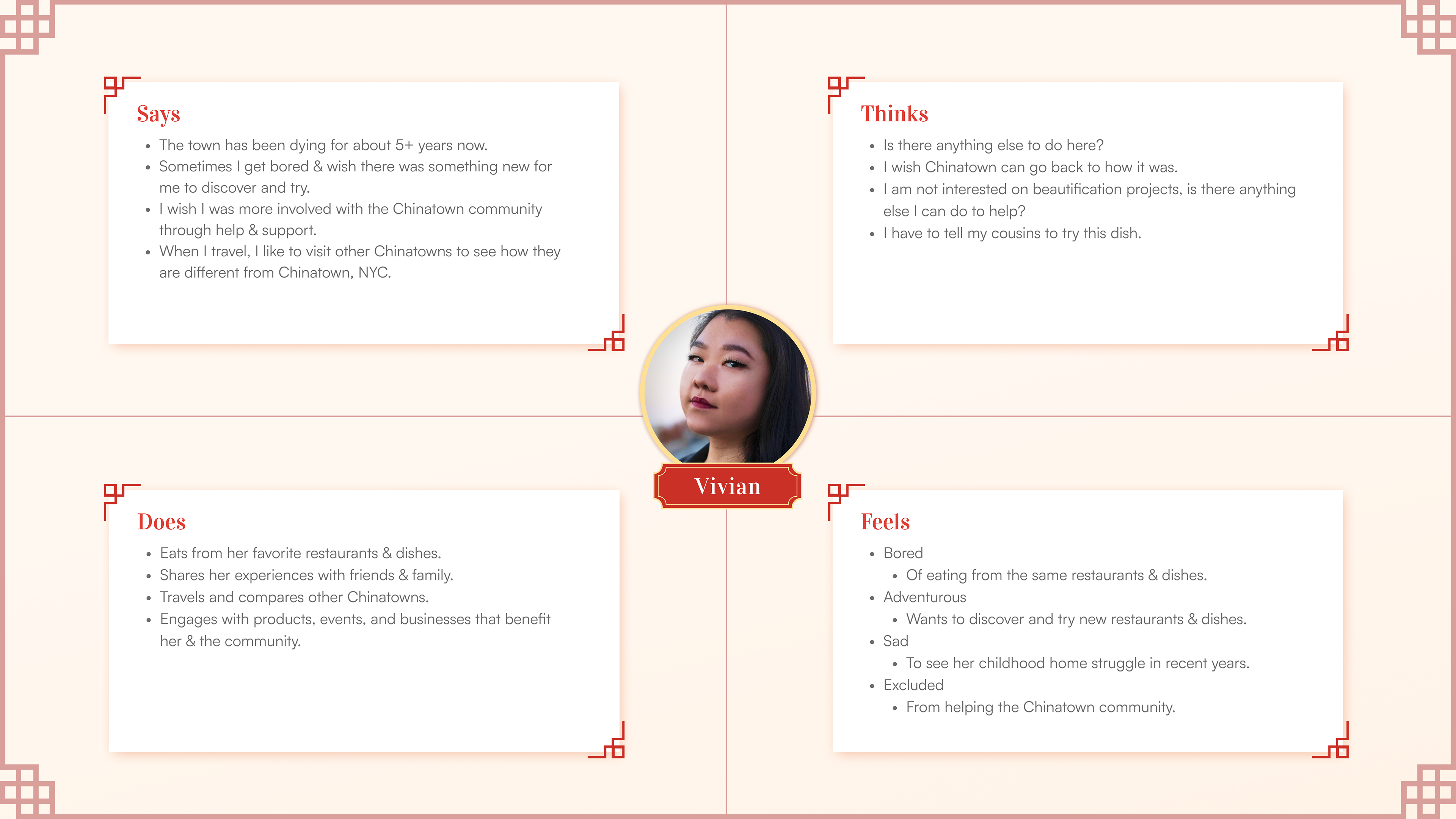
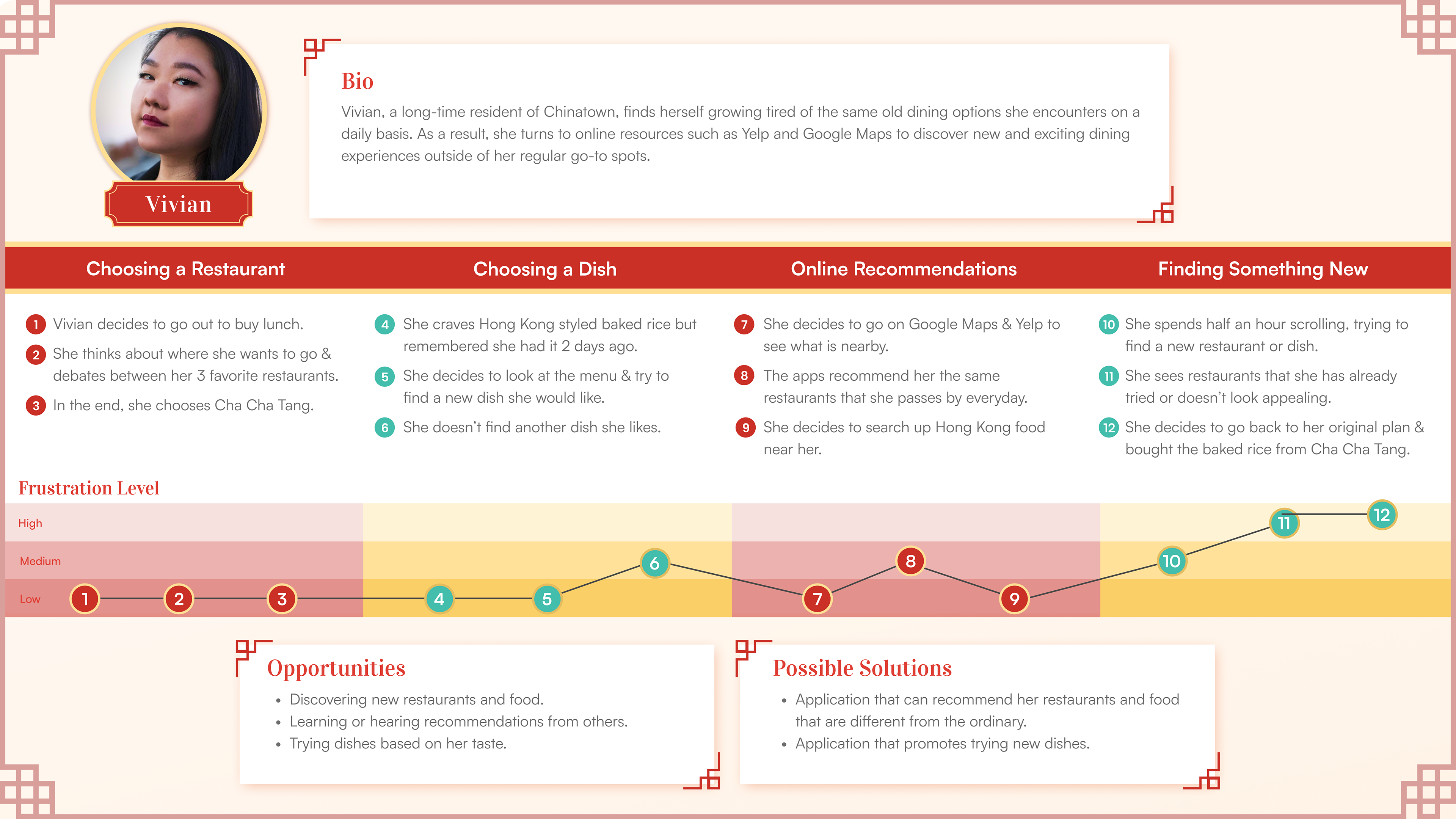
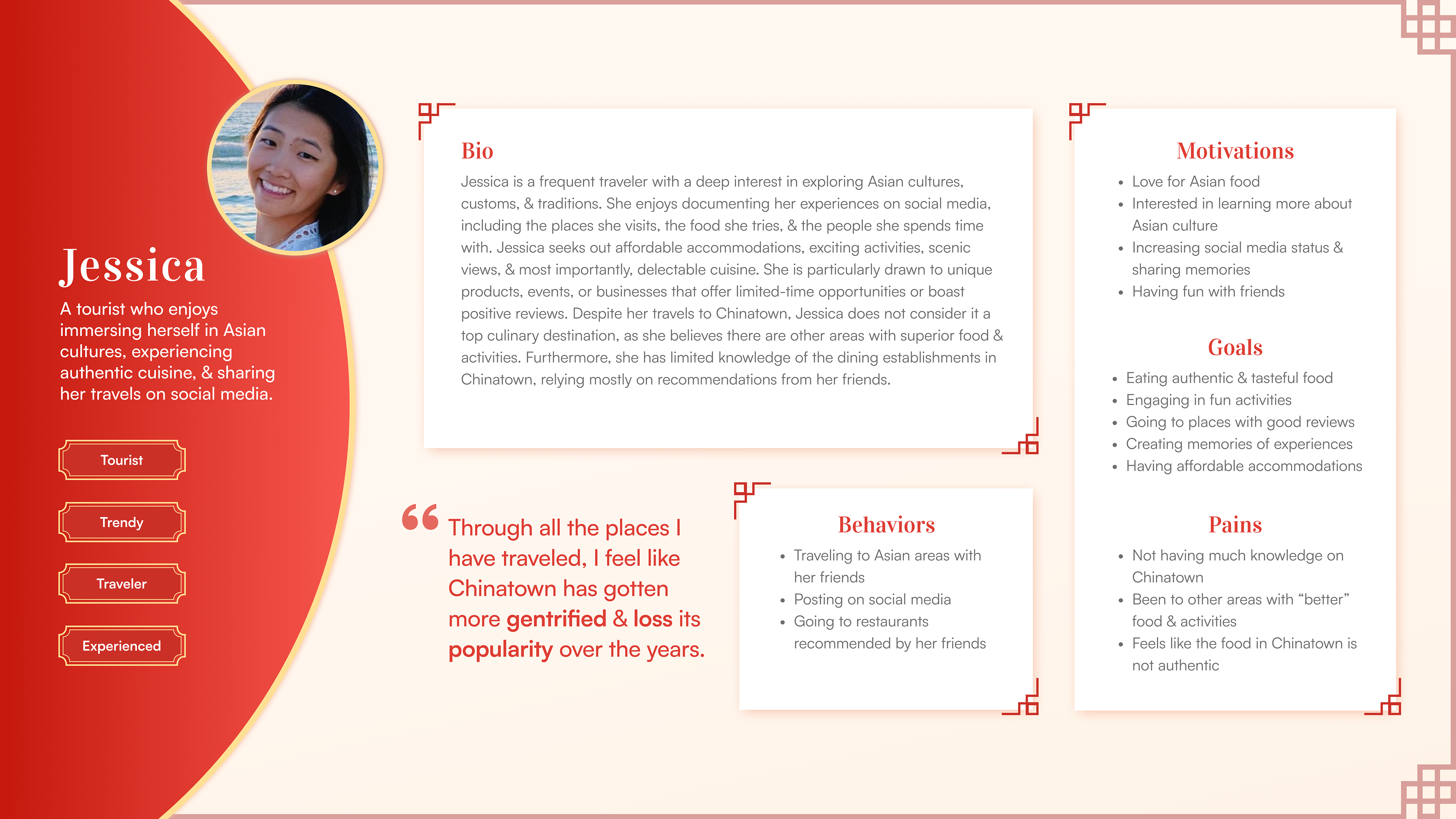
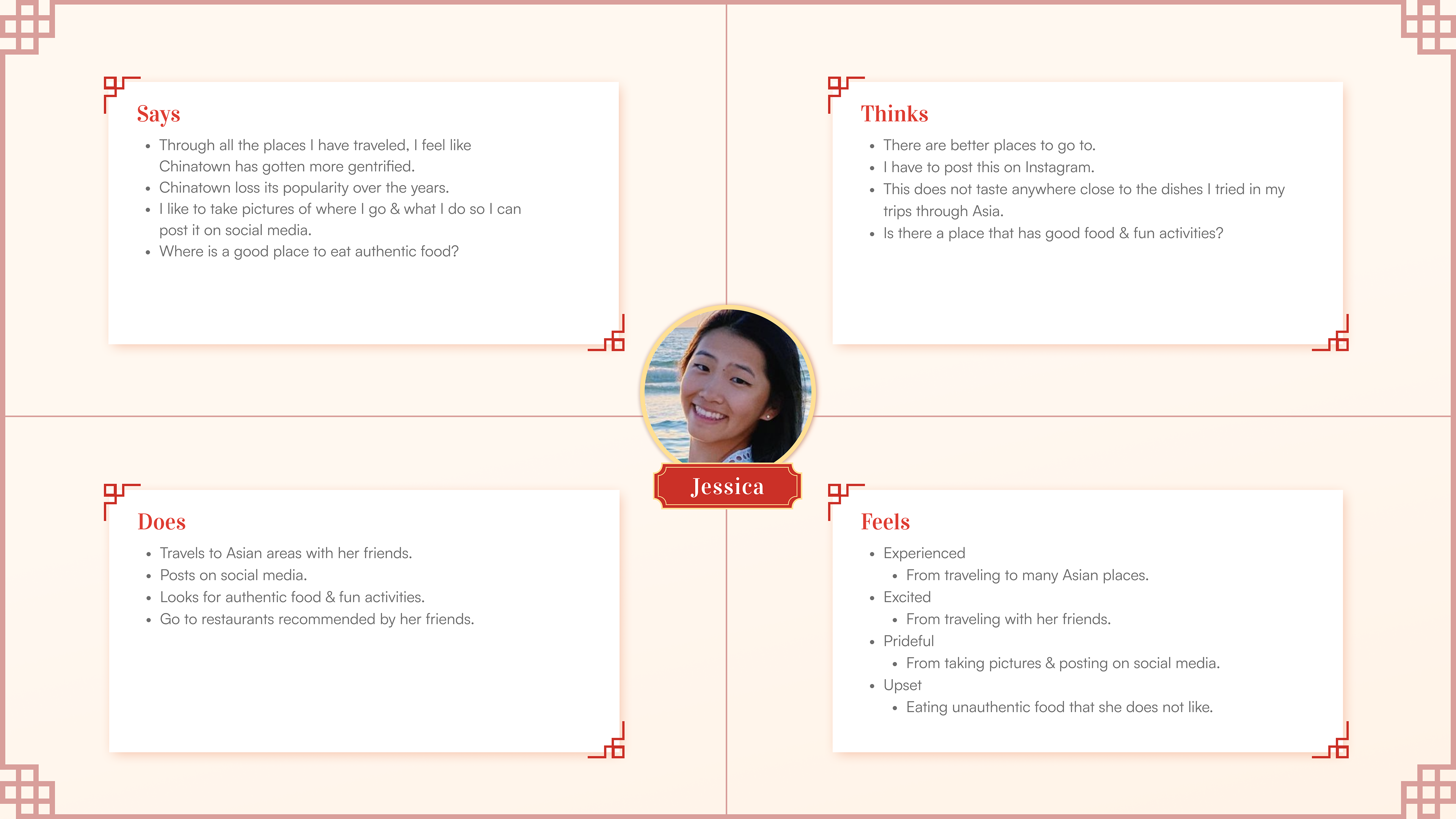
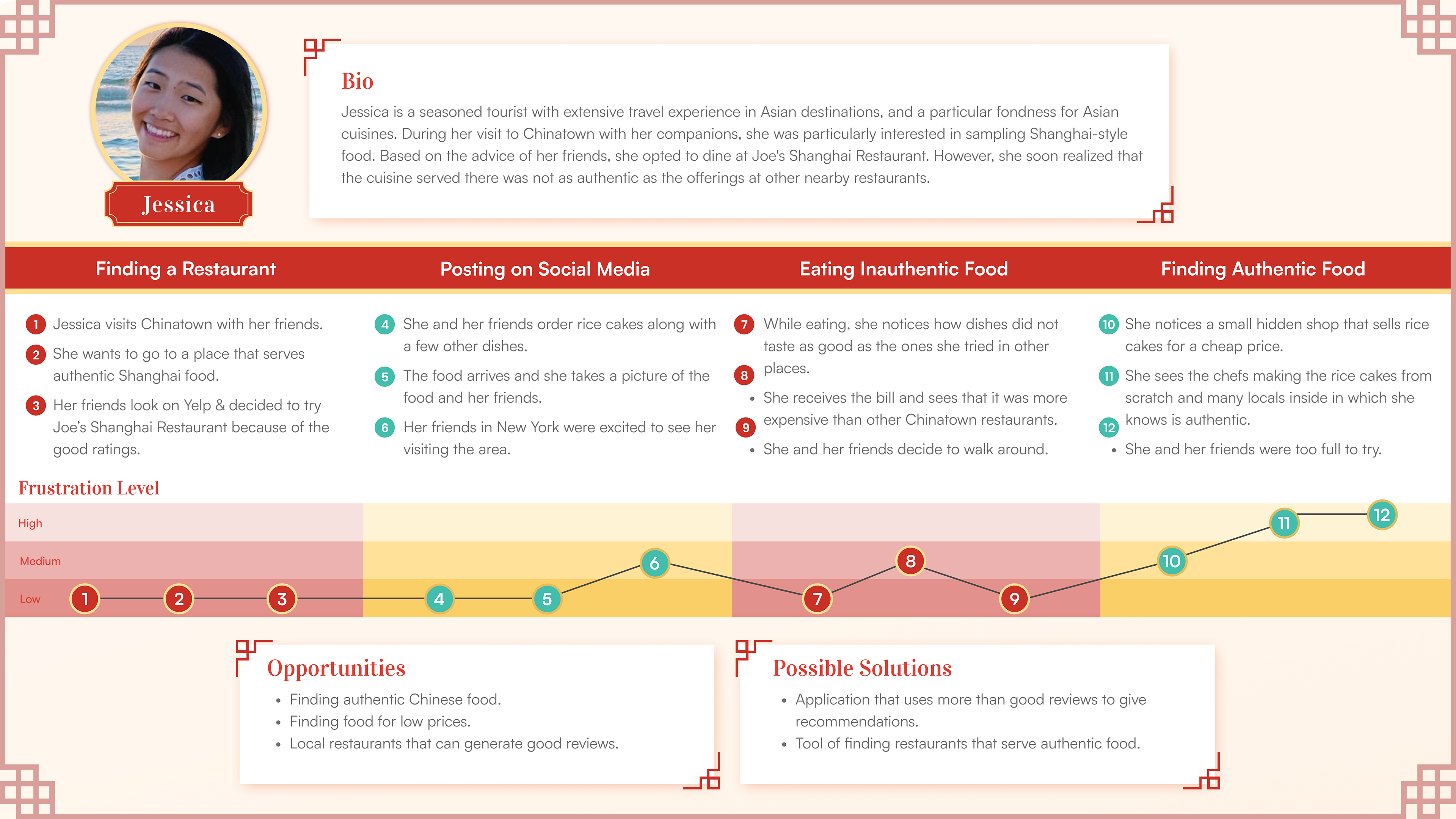
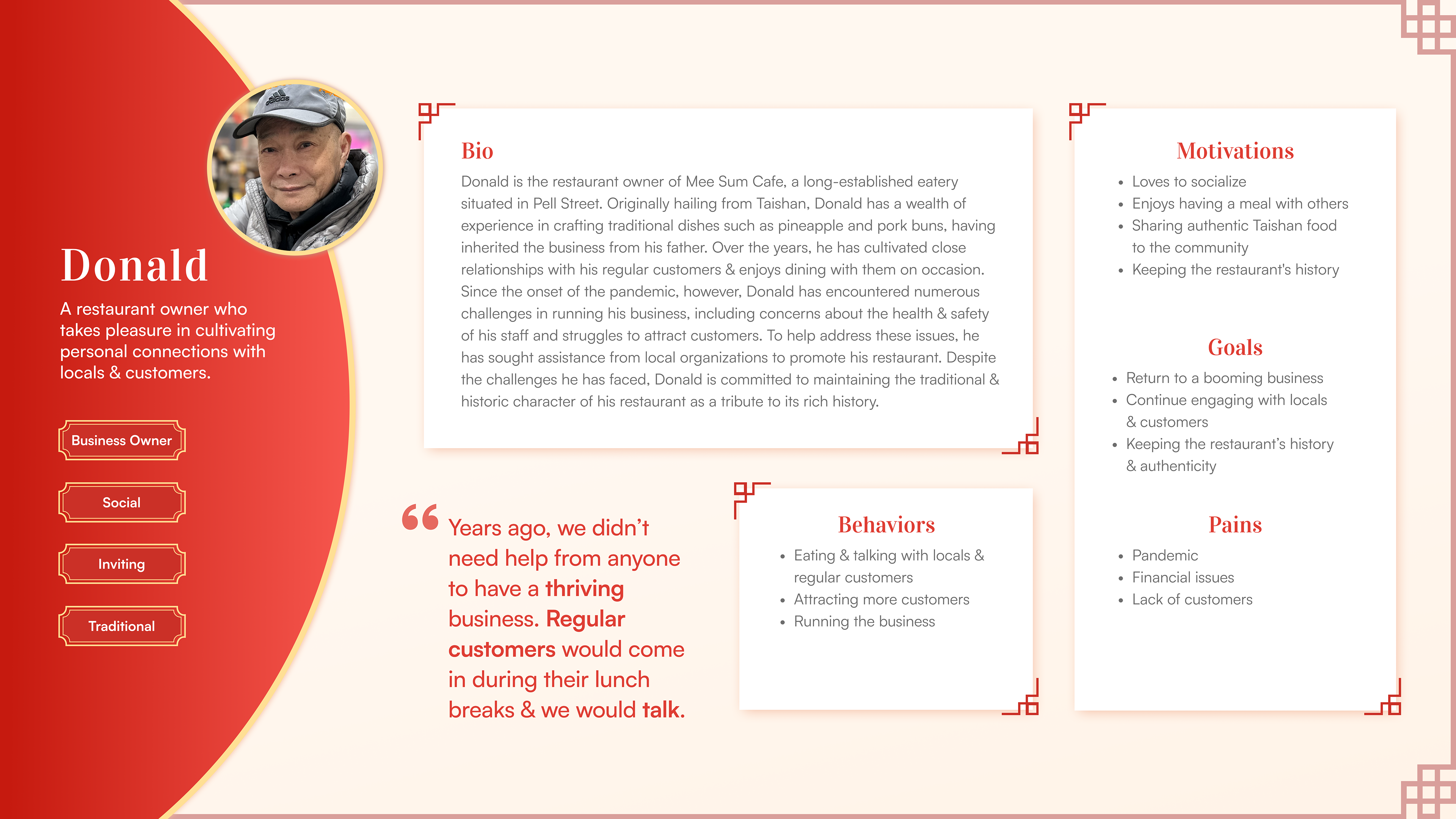
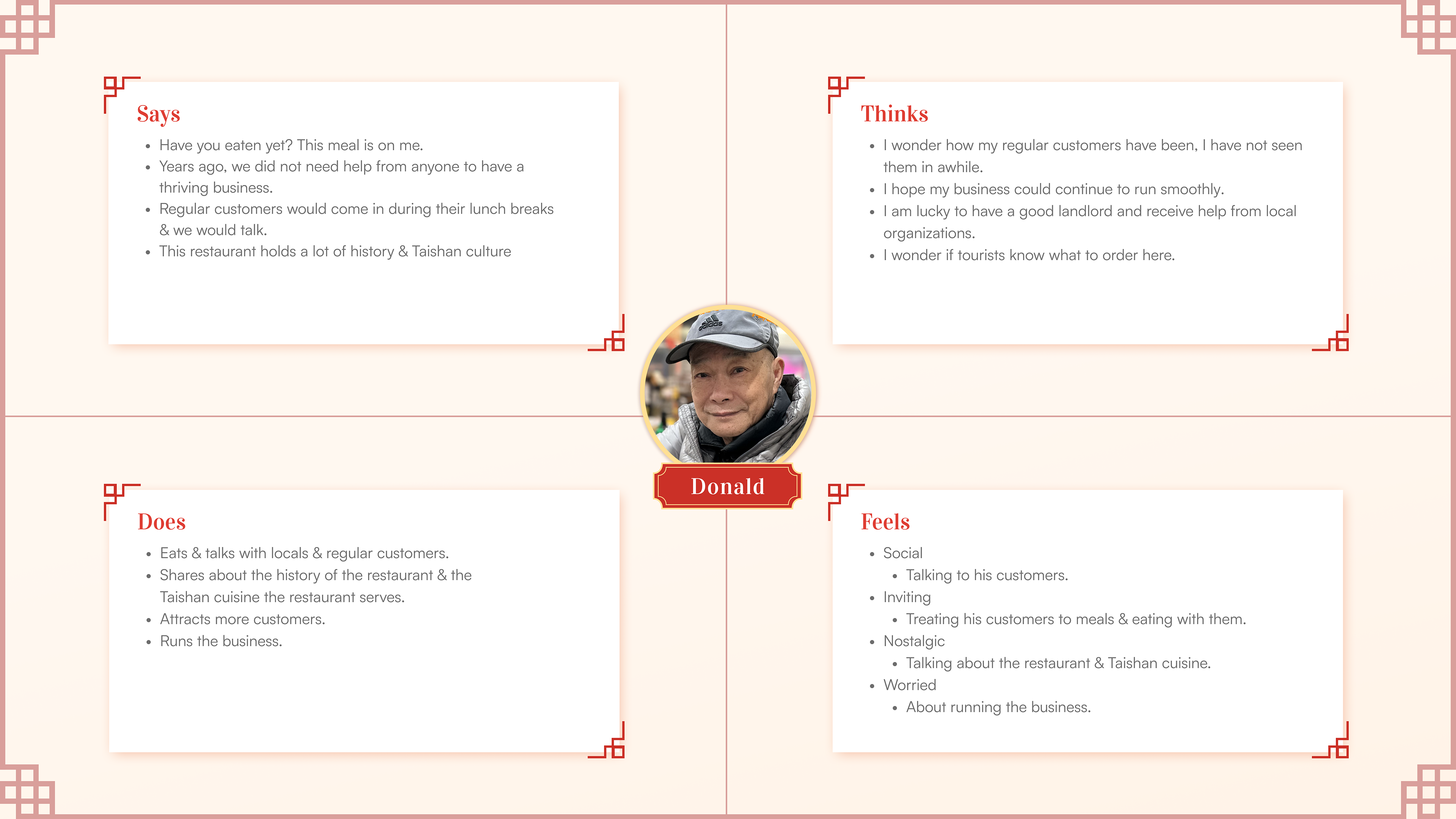
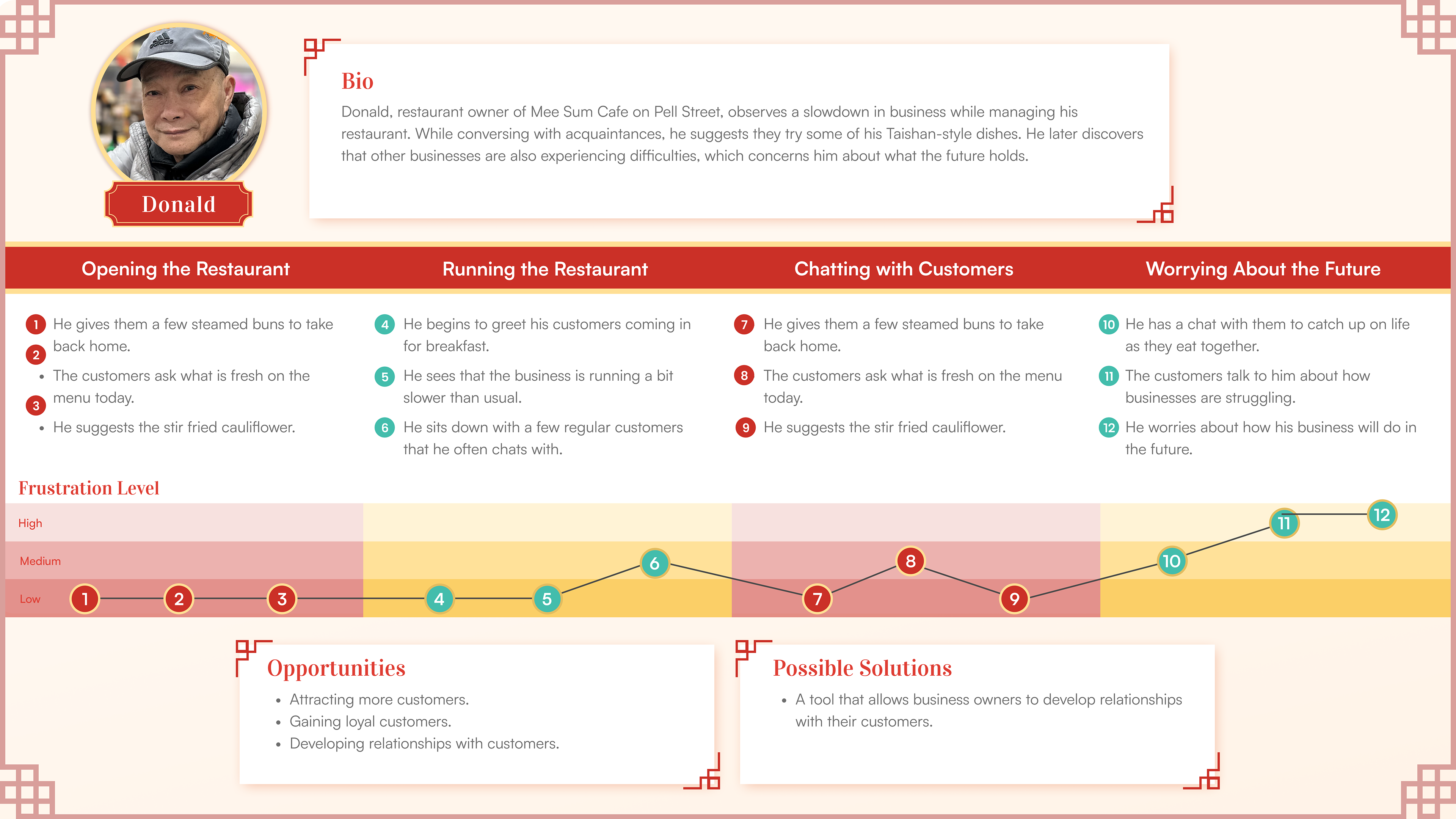
Storyboard
Inspired by Mee-Sum Cafe at Pell Street
Let’s Eat is demonstrated through a storyboard that showcases the persona Esther and her companions’ experiences in Chinatown. The illustrations are inspired by my experience and observations at Mee Sum Cafe, where my family and I ate lunch while I interviewed Donald, the owner of the restaurant. During my visit, my mother had the opportunity to engage in a conversation with one of the chefs.
Sketches and Interaction Models
During the prototyping process, I began by creating interaction models and sketching low-fidelity UI screens. Below is an interaction model demonstrating users' interactions with the Let's Eat app and Round Table when receiving food recommendations and placing orders.
UI Sketches
The UI sketching process went through low-fidelity and high-fidelity sketches. The low-fidelity sketches were created quickly in a sketchbook for brainstorming ideas. Then, high-fidelity sketches were developed for user testing before creating high fidelity prototypes on Figma.
User Testing
"This app reminds me of home"
My senior project underwent significant changes as it was presented at multiple business competitions and research conferences. These events provided guidance from industry experts and audience feedback. Additionally, I conducted remote user testing sessions with participants from the research process, administering a 5-second test on the UI. Based on the user feedback, I tackled the following: identifying minor UI confusion, requesting dish translations, and seeking clarity on how the app determines one’s taste preferences. Overall, users expressed excitement about the app's potential to encourage exploration of Chinatown's foods.
UI Comps and System Requirements
Filtering, viewing, and ordering dishes
Based on the feedback received, the screens were edited and incorporated all the necessary system requirements. These UI comps including the system requirements show the screens of what was shown on the interaction model earlier, when a user is filtering, viewing, and ordering dishes that were recommended to them.
Branding & UI Style Guide
Have you eaten yet? Let's Eat!
To establish a unique brand identity for the app, various options were considered, including the name YuanZhuo, meaning round table. However, after recognizing the potential problem of recalling the name for tourists, the name Let’s Eat was selected. This choice reflects the communal dining tradition and unity emphasized in Chinese culture, where "Have you eaten yet?" is a common greeting. Visually, red and gold colors, synonymous with Chinese culture, were chosen. The logo features the Chinese character "圆," meaning "round," shaped to resemble a person at a table, with the letter "e" from "Eat" forming the body. This design also shows the person holding a phone, symbolizing the app's use.
Competition
Let's Eat provides authentic culinary experiences that showcase commonalities amongst diverse cultures unlike its competitors
Local Chinatown restaurants are adapting to pandemic challenges by embracing technology and innovation to regain customers. Platforms like Yelp, Google Maps, TripAdvisor, and Groupon are partnering with businesses for mutual profit. Innovators, such as Sidewalk Sherpas, are creating personalized experiences to draw visitors back. To compare Let’s Eat with competitors, a competitive analysis chart assessed factors like target audience, business focus, geographic reach, app functionality, user acquisition, and unique selling points.
Marketing
Attracting tourists, locals, and business owners
Let's Eat has two distinct marketing channels: one targeting users (tourists, visitors, and locals) and another for restaurant owners, local organizations, and influencers. Annual events like the Chinese New Year Parade and food festivals provide excellent opportunities to promote the app. Let's Eat can tailor its appearance during these events, featuring limited-time dishes and rewards while showcasing Chinatown's beauty and Chinese culture. The app also offers a rewards program, allowing users to redeem souvenirs like stickers from participating restaurants, serving as both tokens of appreciation and effective marketing tools.
Final Product
Displayed at Farmingdale State College's 2023 Senior Design Expo
As the final product, Let's Eat was presented at Farmingdale State College's 2023 Senior Design Expo. My project featured a physical booth, a poster, digital and printed versions of a project book, a project website, a physical prototype of the connected mobile round table, and a Figma prototype for the Let's Eat app. As a bonus, I included my favorite Chinese New Year candy and printed a menu summarizing the project for exhibition attendees.
Recognitions & Achievements
1st Place in SUNY LI Pitch Fest 2022
Throughout the semester, I've had the opportunity to pitch and present my project at several business competitions and research conferences. During one particular business pitch competition, Let's Eat won first place. These opportunities have not only allowed me to gather valuable feedback but also raised awareness from the audience about the challenges being faced in Chinatown.
Reflection & Future Work
I intend to conduct further research on other Chinatowns across the country
Thank you for taking the time to explore Let's Eat! I plan to use Let’s Eat to inspire and educate individuals about food's potential to unite communities, cultures, and generations, not just in Chinatown but worldwide. Successfully completing my senior thesis addressing Chinatown's issues, such as tourist traps, lack of authentic experiences, and mistrust of the Asian community, has been fulfilling. Additionally, I'm pleased to have raised awareness not only in Farmingdale but also in other parts of Long Island and the Bronx.
Given additional time, I intend to conduct further research on other Chinatowns across the country. I also intend to conduct further user research to delve deeper into user behavior and learn more about their motivations to try new and unfamiliar foods.
The development of Let’s Eat owes its existence to my fond recollections of my upbringing in Chinatown. With the creation of Let’s Eat, I hope the project can be introduced to the Chinatown community and the world at large, so that the neighborhood may once again thrive as it once did, filled with lively streets and a tightly-knit community.
"I hope people get to experience a
taste of the Chinatown that I grew up in."

